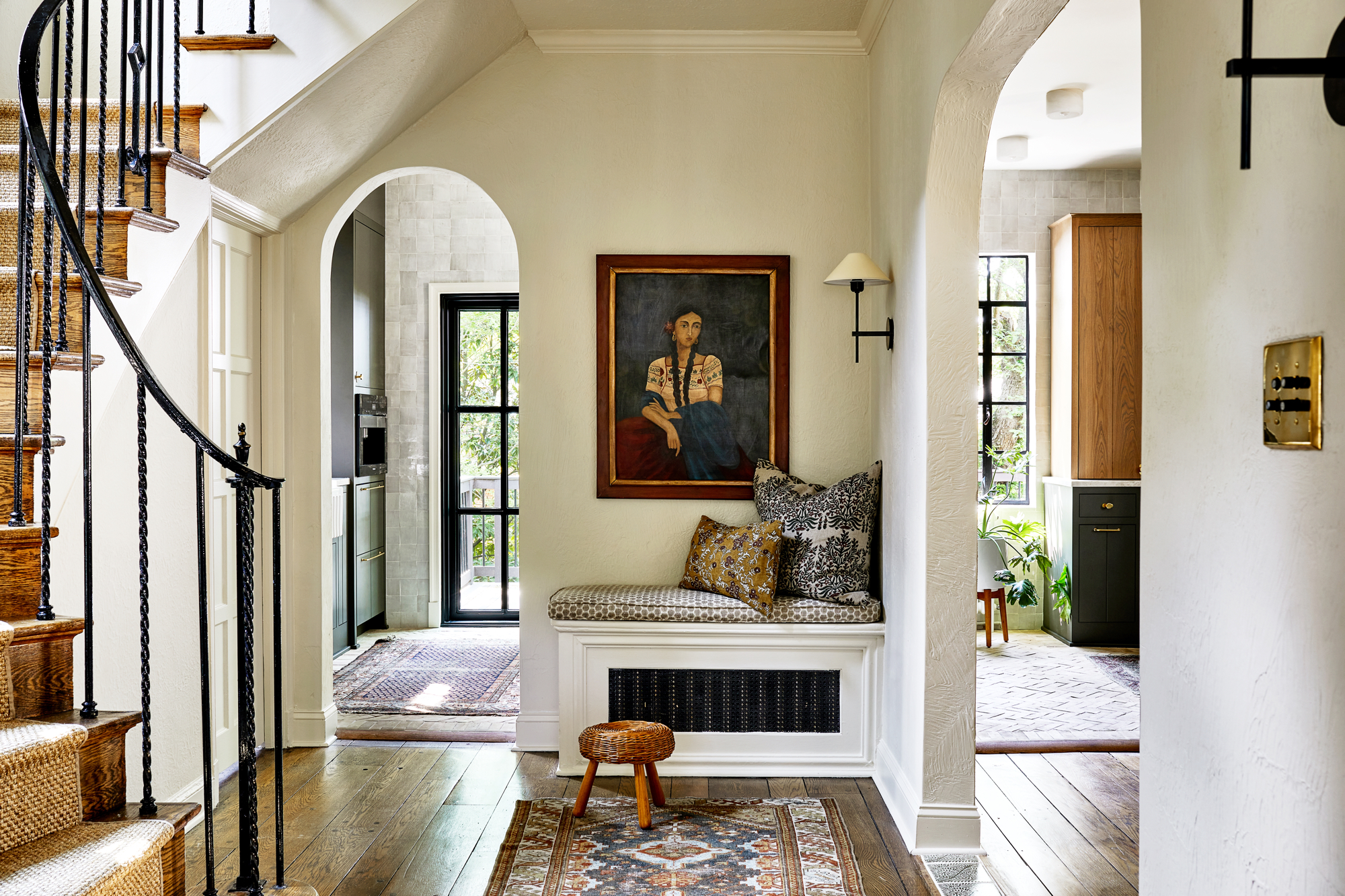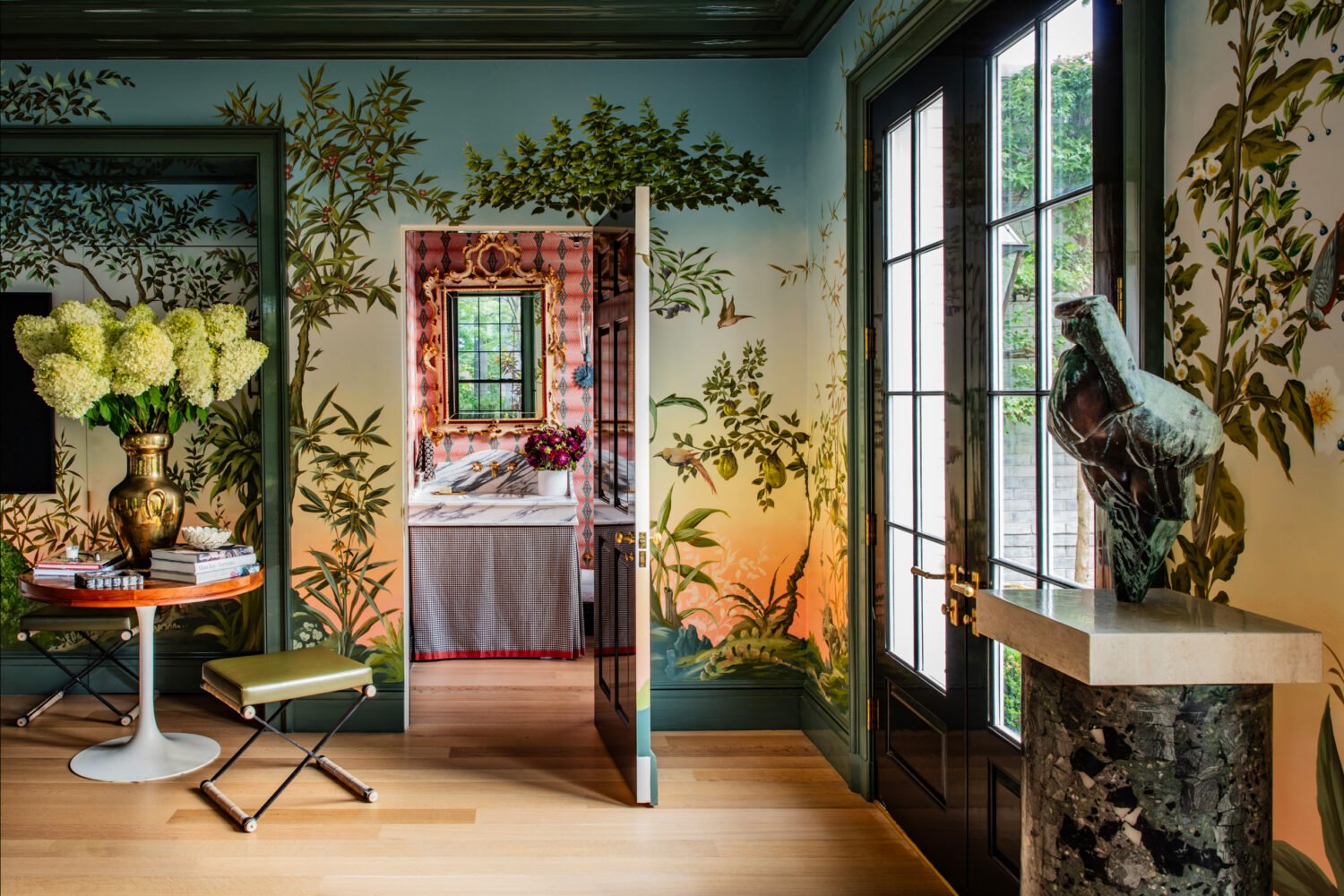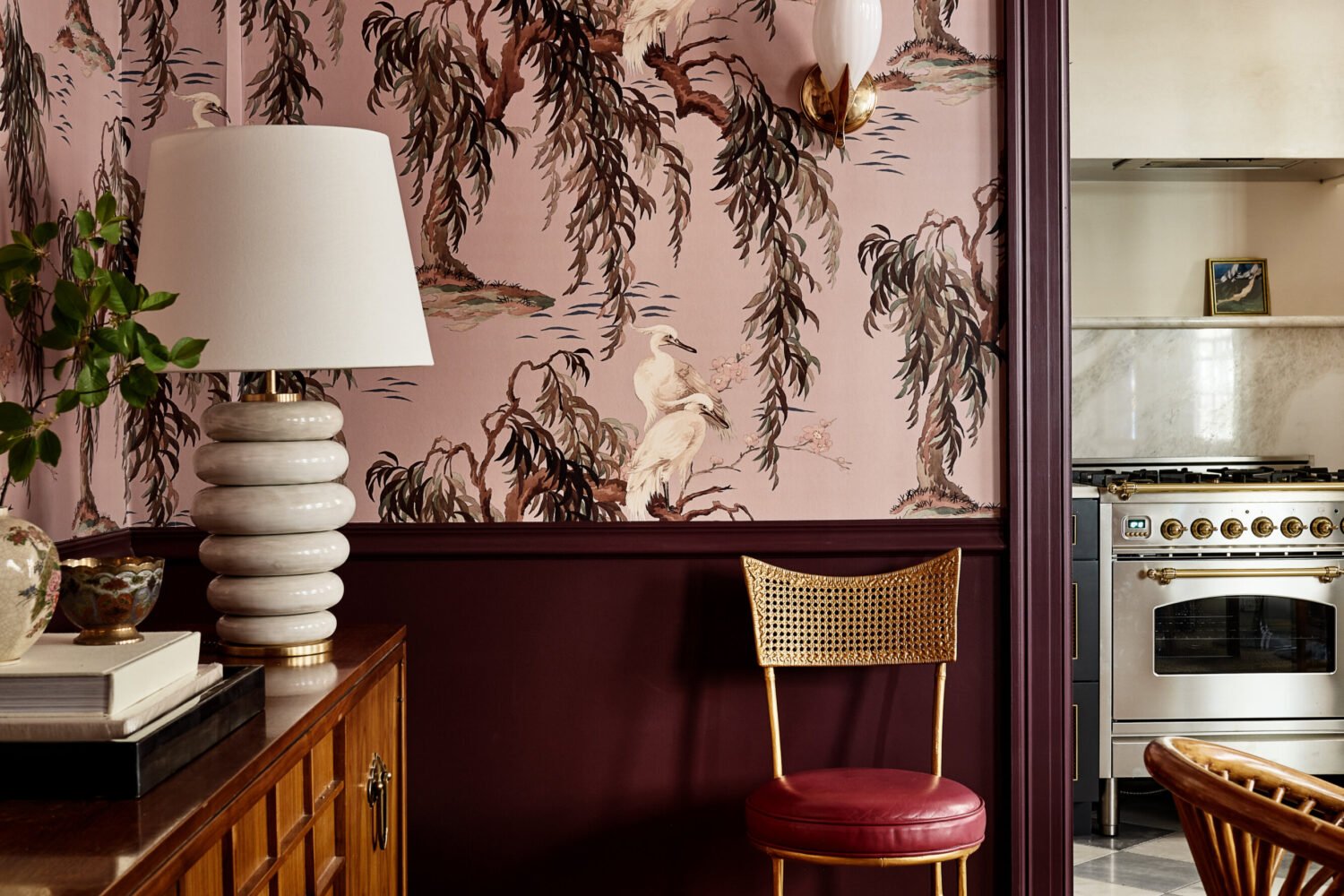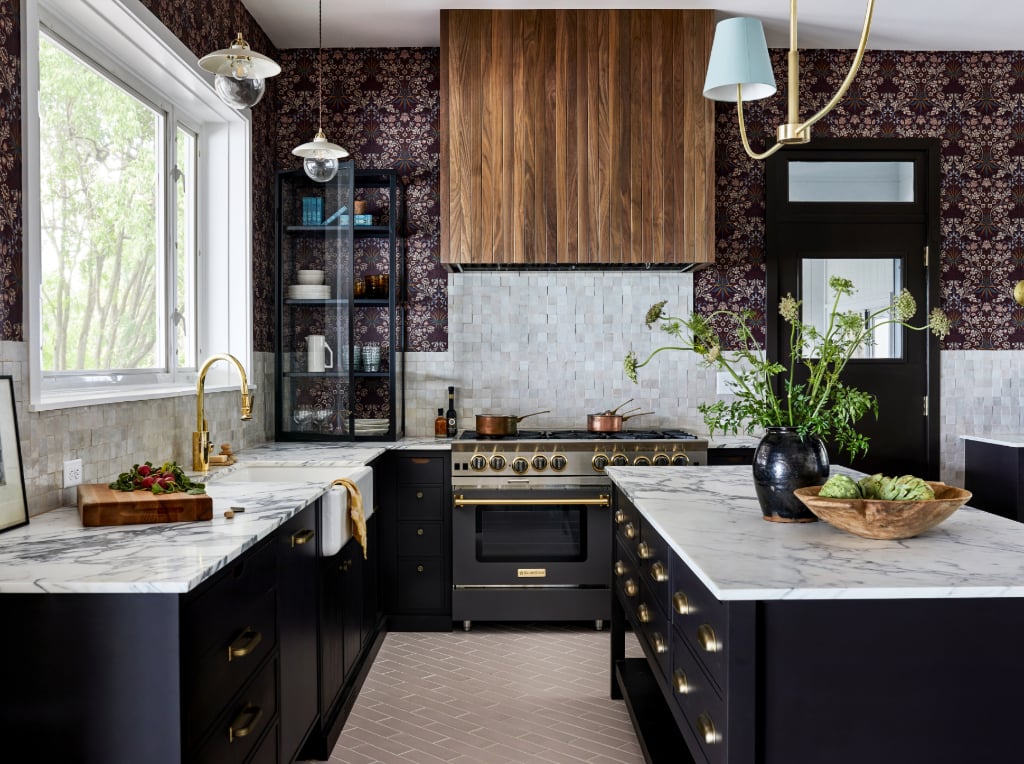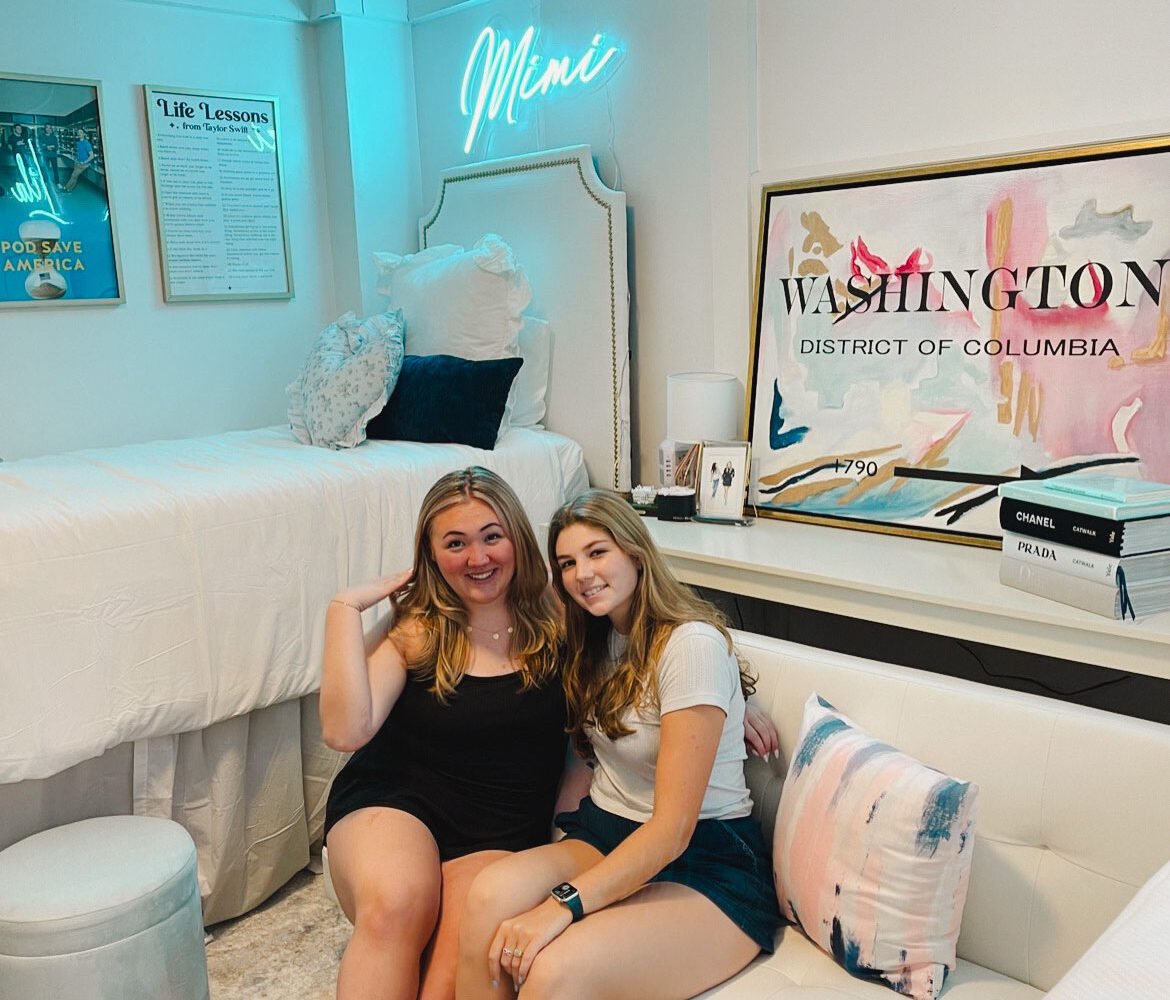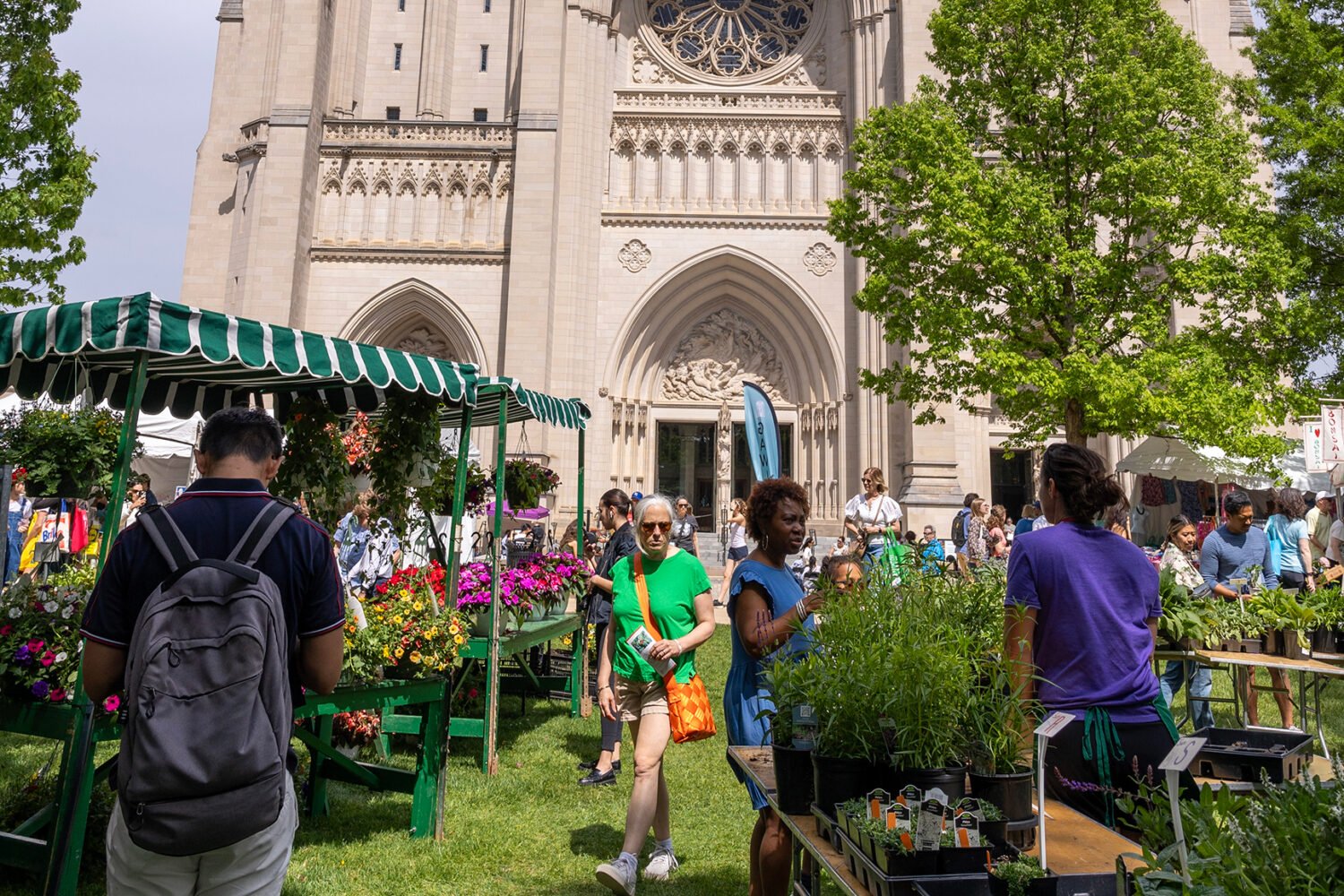Don’t be surprised if you start to notice fewer photos of minimal, sleekly designed rooms in your Instagram feed in favor of more pictures of bedrooms and living rooms with warm, textured, sometimes whimsical decor.
No one wants to choose furniture and decor solely based on trends, of course. But if you’re thinking of refreshing a room, you don’t want to invest in items that will look dated, either. We spoke to six interior designers to find out what we can expect to see more—and less—of in the new year.
Textural, Organic Accents
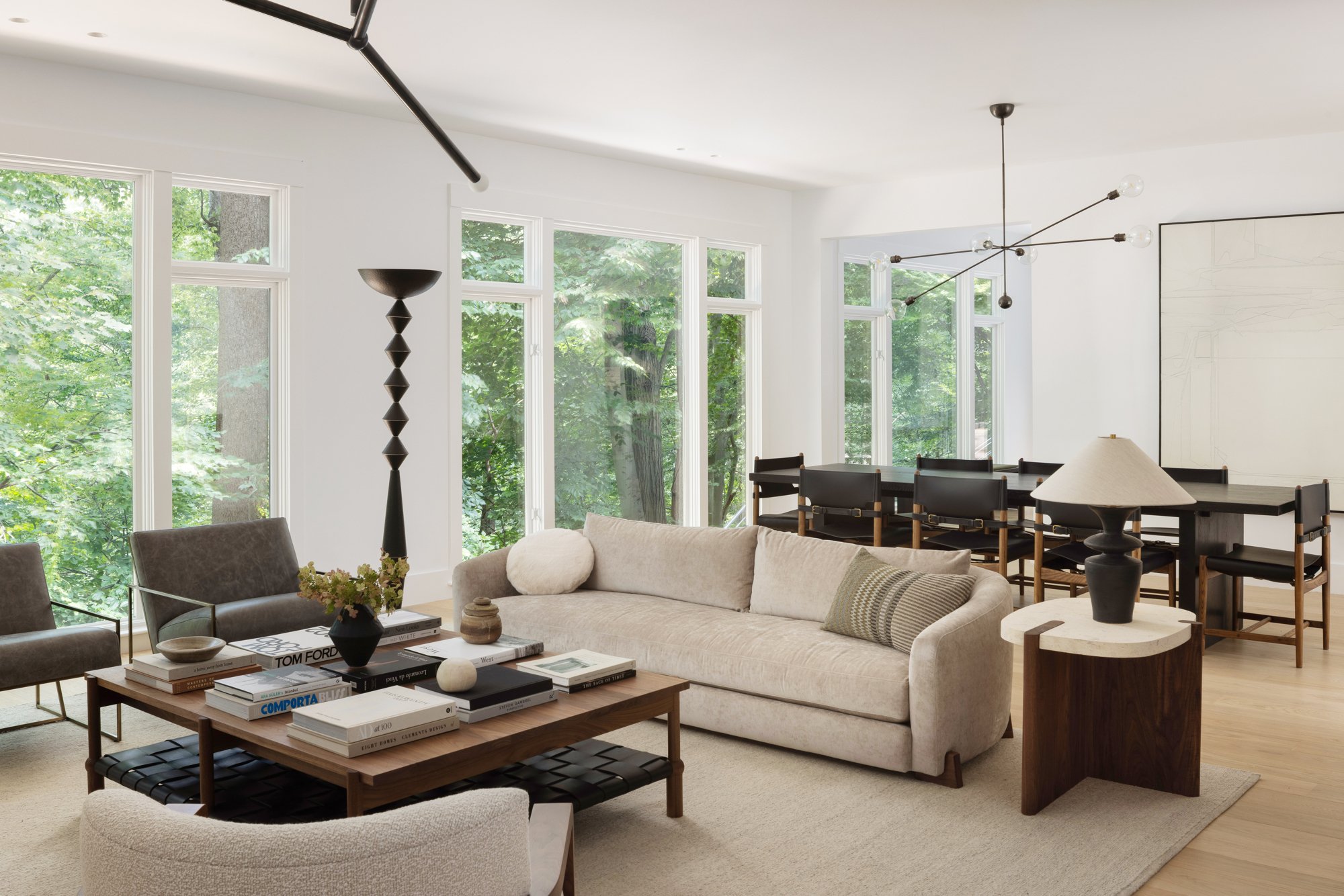
Bouclé, fringe, rattan, and other textured touches will be big, says Elana Mendelson, owner and principal designer of Elana Designs in Potomac, who plans to use “more mixed-media art, upholstered pieces with more dimensional detail, and natural elements.”
Organic shapes are also on the rise. “There will be more of a desire for the ‘imperfect’ in interiors,” says Kevin Billings, founder and lead designer of Dexter & Plaid in Leesburg. “I see the move away from pieces and elements that feel streamlined or minimal.” Billings also anticipates greater use of organic details, including wood, handwoven textiles, and limewash. “All of those textures create such a warm, layered, and curated space.”
Sustainable Choices
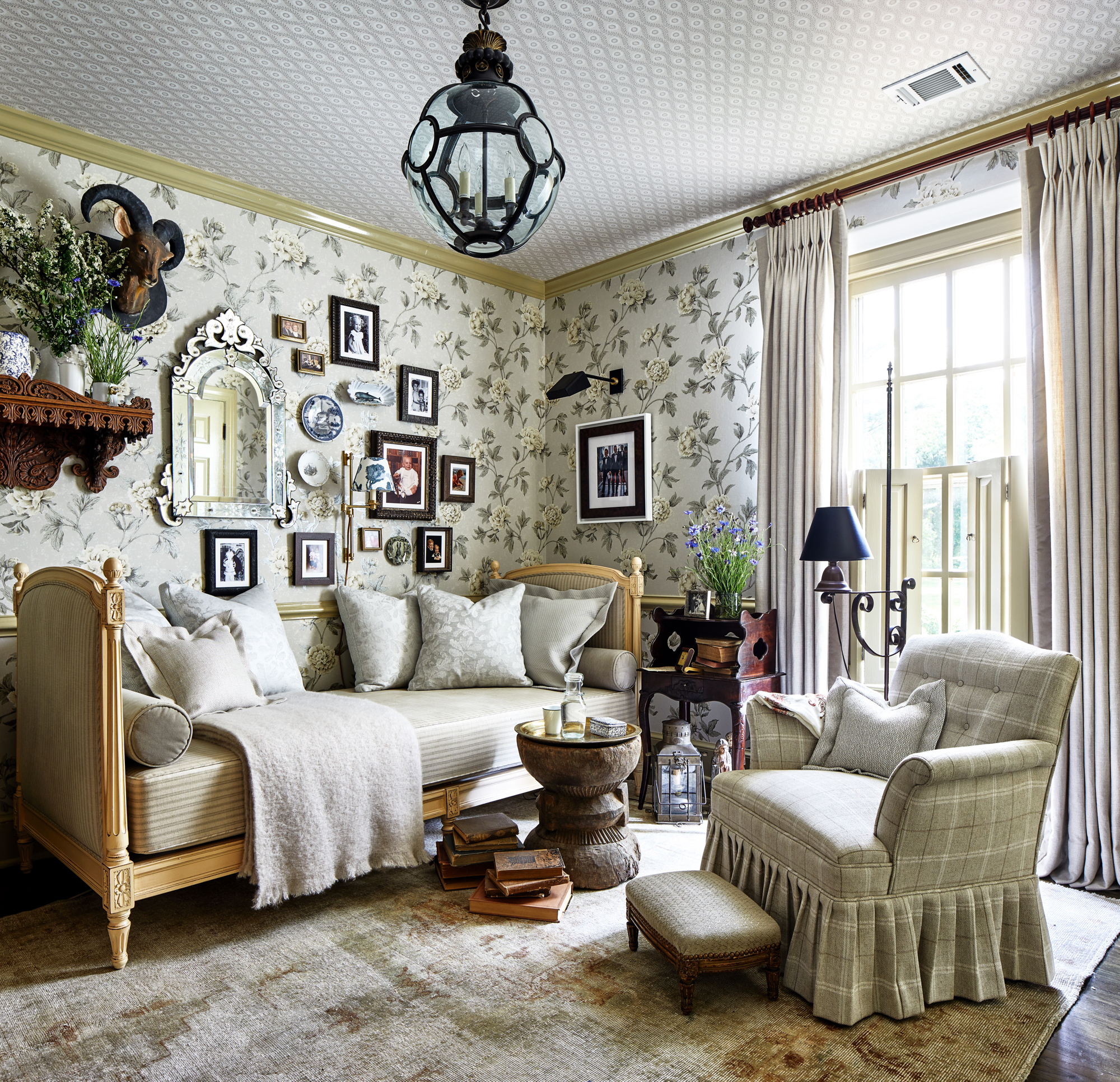
Laura Hur, owner and lead designer of Lorla Studio in Kensington, says sustainability is “no longer a trend but an important factor to most homeowners.” Consumers are continuing to pay close attention to how their design choices impact both their health and the environment, and Hur predicts there will continue to be a greater demand for handcrafted, artisanal, and local pieces in lieu of mass-produced items.
“This is probably the trend we are the most excited about, because we love designing custom furniture pieces and architectural solutions for our clients,” she says. “It provides homeowners with a unique solution tailored perfectly to their space, and as designers it allows us to flex our creative muscles while collaborating with artists in the industry.” Better yet, with custom furniture, “you are creating an heirloom that will hopefully remain in the family for generations to come.”
Heirlooms that already exist are making a comeback, too—perhaps no surprise, given how popular s and flea markets are, especially with younger generations. “I see them being more and more incorporated for remembrance, familiarity, and a feeling of togetherness,” says DC interior designer Paul Corrie.
Sustainable natural materials and finishes will likewise be everywhere, Hur says: “We envision collaborating with artists and craftsmen to find new uses for familiar finishes such as clay lime, tumbled tiles, and cerused woods.” Expect an influx of butcher-block countertops, pine furniture, and natural stone pieces, too.
More Lamps, Less Recessed Lighting
Table lamps will shine, quite literally, in 2024, according to Shannon Claire Smith, an interior designer in Silver Spring. “Have an empty hard surface in your room? Put a lamp on it,” she advises. “Don’t be the person in your friend group who relies on the overhead light only—your friends and family don’t want to feel like they need to wear shades inside.” Smith says the soft lighting that lamps produce instantly cozies up a space.
Speaking of overheads, Sara Swabb hopes that recessed lighting in renovations and new-builds will become a thing of the past. “While recessed lighting does provide bright light, it cuts up our ceilings in an industrial way and creates harsh, downcast light, causing unattractive shadow play,” explains the founder and creative director of Storie Collective in DC. An alternative that’s more aesthetically appealing? Discrete flush mounts, which Swabb says are excellent for kitchens, mudrooms, and bathrooms. Or go with another decorative yet functional option, such as a chandelier, floor lamp, sconce, pendant, or yes, table lamp.
Whimsical Touches
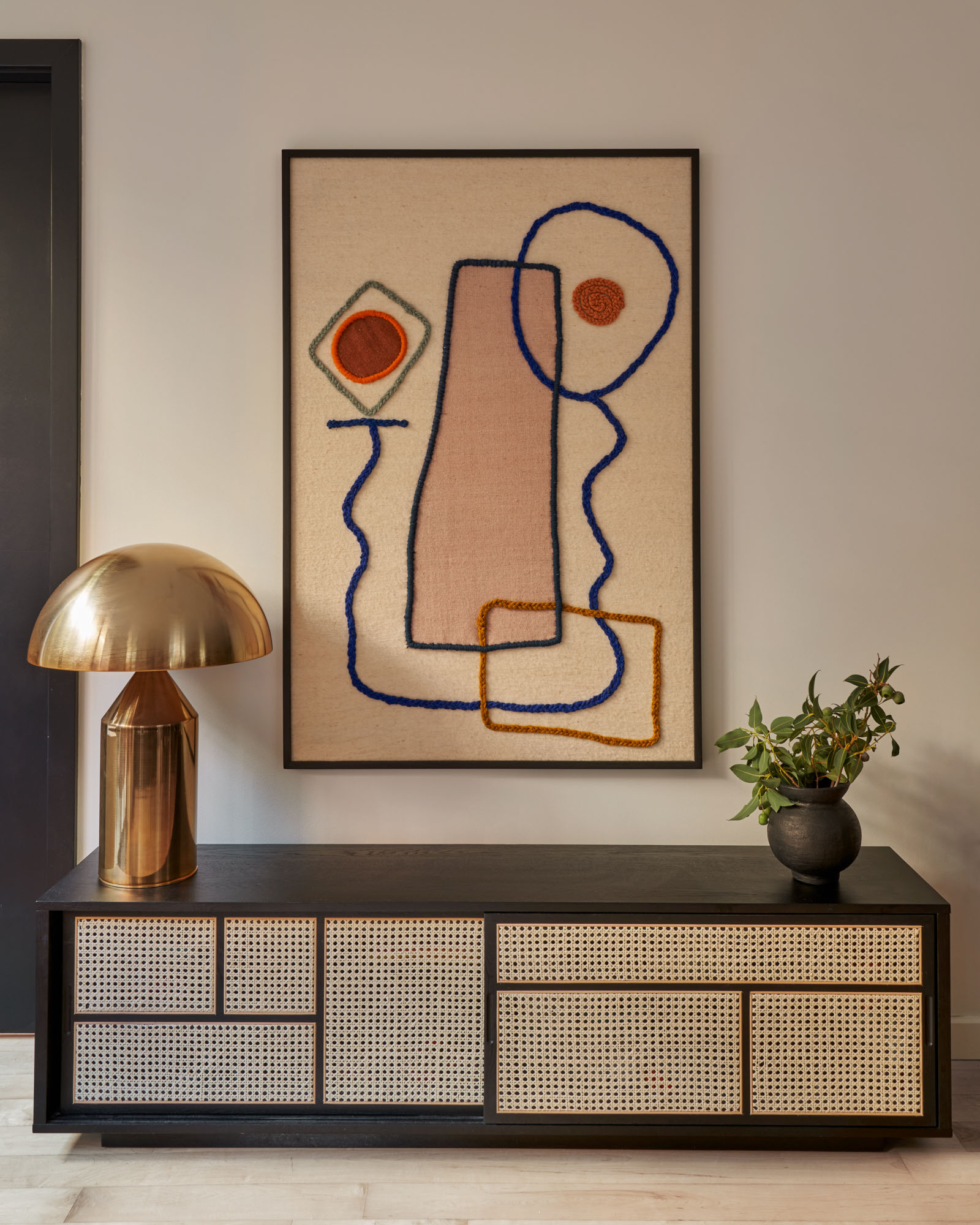
Mendelson says we’ll also see more “fun and whimsical” classic elements, including curves and scalloped edges, making their way into modern design. Smith, too, is seeing an increase in what she calls “opposite-ends-of-the-spectrum” design—rooms with traditional furniture alongside contemporary sculptural accents. “A great example would be a traditional English rolled-arm sofa with skirted fringe paired with a 1960 ultra-mod and ultra-sculptural light fixture,” Smith explains. “Mix in some oversized colorful graphic or abstract art and you have a room design that’s rooted in the classics but still interesting enough to spark conversation.”
Curves are just one way to add a touch of whimsy to your home—especially, says Laura Hur, with the maximalist aesthetic having a moment of late. She’s excited to see more playful drawer pulls, wall moldings, textiles, art, and ceramics: “We love projects where the design is elevated but doesn’t take itself too seriously.”
Moody Black and Gray
The paint company Behr named “Cracked Pepper” the color of the year for 2024, and Hur takes this as a sign that black and dark-gray tones will rise in popularity over the next 12 months. “They ground a modern space and at the same time modernize a more traditional space,” Hur says. “There are very few interiors in which a dark charcoal or black color will not work.”
This article appears in the January 2024 issue of Washingtonian.

